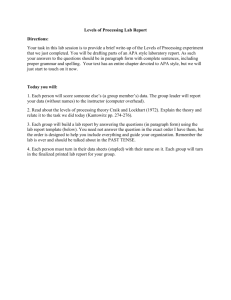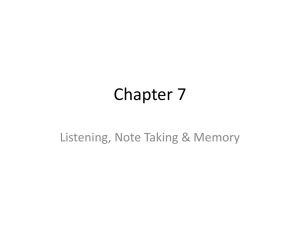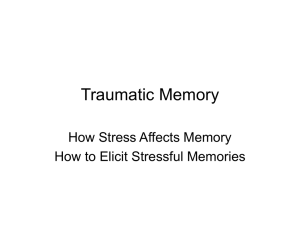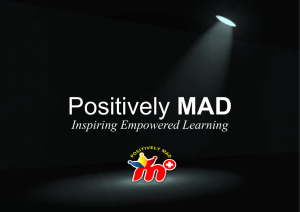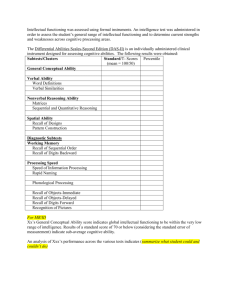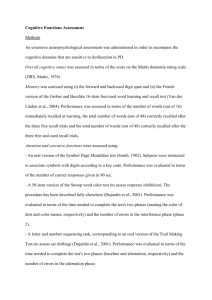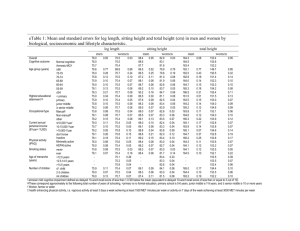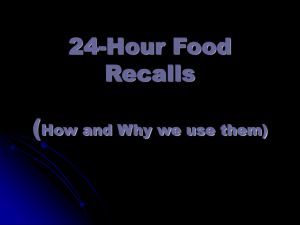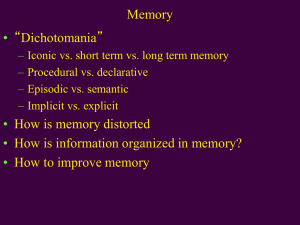Evaluation
advertisement
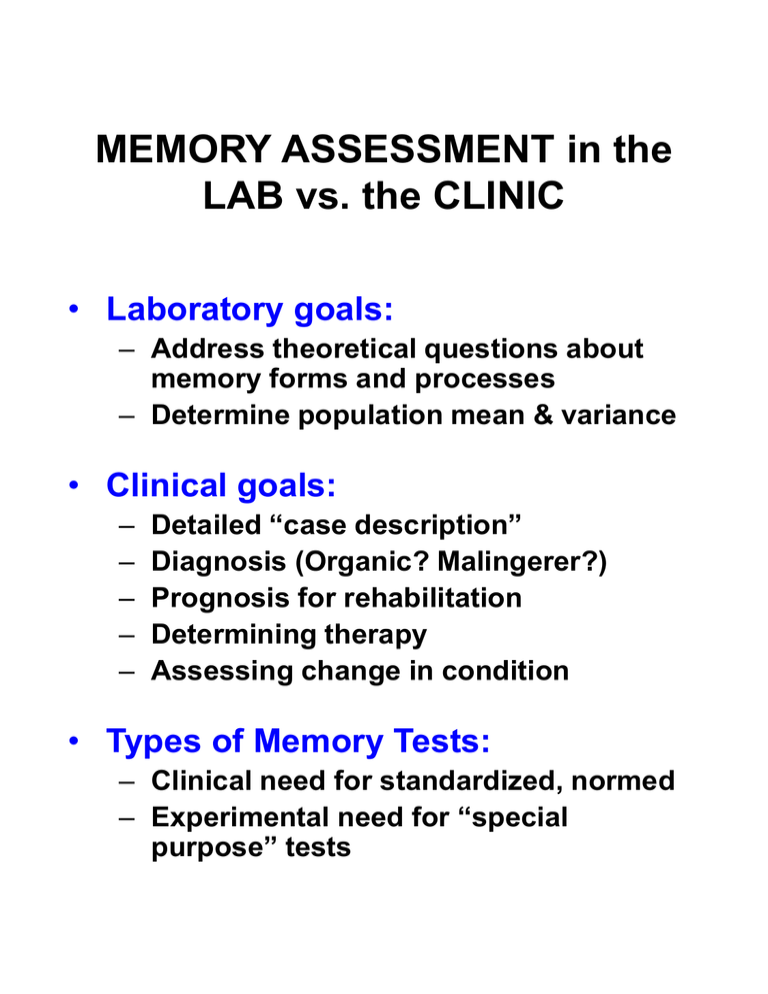
MEMORY ASSESSMENT in the LAB vs. the CLINIC • Laboratory goals: – Address theoretical questions about memory forms and processes – Determine population mean & variance • Clinical goals: – – – – – Detailed “case description” Diagnosis (Organic? Malingerer?) Prognosis for rehabilitation Determining therapy Assessing change in condition • Types of Memory Tests: – Clinical need for standardized, normed – Experimental need for “special purpose” tests CRITERIA FOR CLINICAL TESTS Standardized tests should be… • • • • Reliable Valid Sensitive Sample wide range of.. – – – – – – Retention intervals Verbal , nonverbal Simple and complex Old memory and new learning Quantitative and qualitative measures “modes” of response • Normed by age, IQ, etc • “Patient friendly” – Quick and engaging CLINICAL MEMORY BATTERIES • Wechsler Memory Scale III (1997) – Orientation (How old are you? Who’s governor of Florida?) – Mental Control (recite the months of the year) – Immediate Memory Span and Working memory (serial recall and sequencing of letters, digits, positions) – Logical Memory (immediate and delayed recall of prose passages) – Configural Memory (recognition of faces and family pictures, immediate and delayed) • Wechsler Memory Scale III (1997) – Evaluation: • Tests new learning only • Well normed, most popular test • Normed against WAIS (an IQ test) • Takes nearly an hour to administer • No alternative forms for assessing change WMS Index WAIS FSIQ WM Immediate Memory .57 .44 General Memory .60 .47 Working Memory .68 .82 % Y variance accounted for by X = r2(X,Y) • Rivermead Everday Memory Test – – – – Orientation (place, time and personal) Verbal Recall (list of names) Spatial Recall (set of hidden objects) Spatial Route Recall (immediate and delayed) – Immediate Recognition (of pictures and faces) – Story Recall (immediate and delayed) – Prospective Memory (ask a specific question when cue is given) – Evaluation: • Tests new learning only • Good reliability and face validity • Four forms for assessing change • Takes less than 30 minutes to administer • Good “prognostic sensitivity” • Baddeley Battery (!) for Verbal and Nonverbal Information – Peoples Test (photos, occupations, and names of four people; cued recall) – Shapes Test (copy and later recall four versions of abstract forms) – Names Test (recognition for 12 names, 4AFC (Matt Brownell, Mark Brownhill..) – Doors Test (recognition of 12 doors with varied molding) – Evaluation: • Tests new learning only • Good distinction between visual-spatial and verbal materials • Quick and friendly • No delayed recognition • Limited norming so far • Kopelman Memory Interviews – Personal Semantic Memory Schedule (schools, friends, personal facts from various life periods) – Autobiographical Incidents (cued recall of particular episodes from specific periods) – Famous Personalities Test (Names and faces of famous and unknown persons by decade – News Events Test (cued recall of details of pictured events by decade) – Dead-or-Alive Test (!) (names of famous people by decade: dead or alive?) – Evaluation: • Tests prior knowledge (retrograde) • Good range of retention intervals • Mostly verbal knowledge • Needs re-norming every few years • Difficulty of validating personal info Factor Analysis of Clinical Memory Tests • Hunkin, et al. (2000) – WMS-R and several other tests given to 50 patients with range of impairments – Assess correlations among scores, e.g.: • WMS-Verbal with: – WMS-Visual – WMS-Delay – WRMT-Words – WRMT-Faces – D&P doors +.49 +.75 +.54 +.16 +.30 – Derive independent factors for • Immediate versus delayed • Recall versus recognition • Verbal versus visual for recognition, not recall • Summary of Clinical Batteries – – – – – Wide range of memory systems tested Provides clinician with standard toolkit Problem of ceiling and floor effects Challenge of different norming groups Complements ad hoc tests
